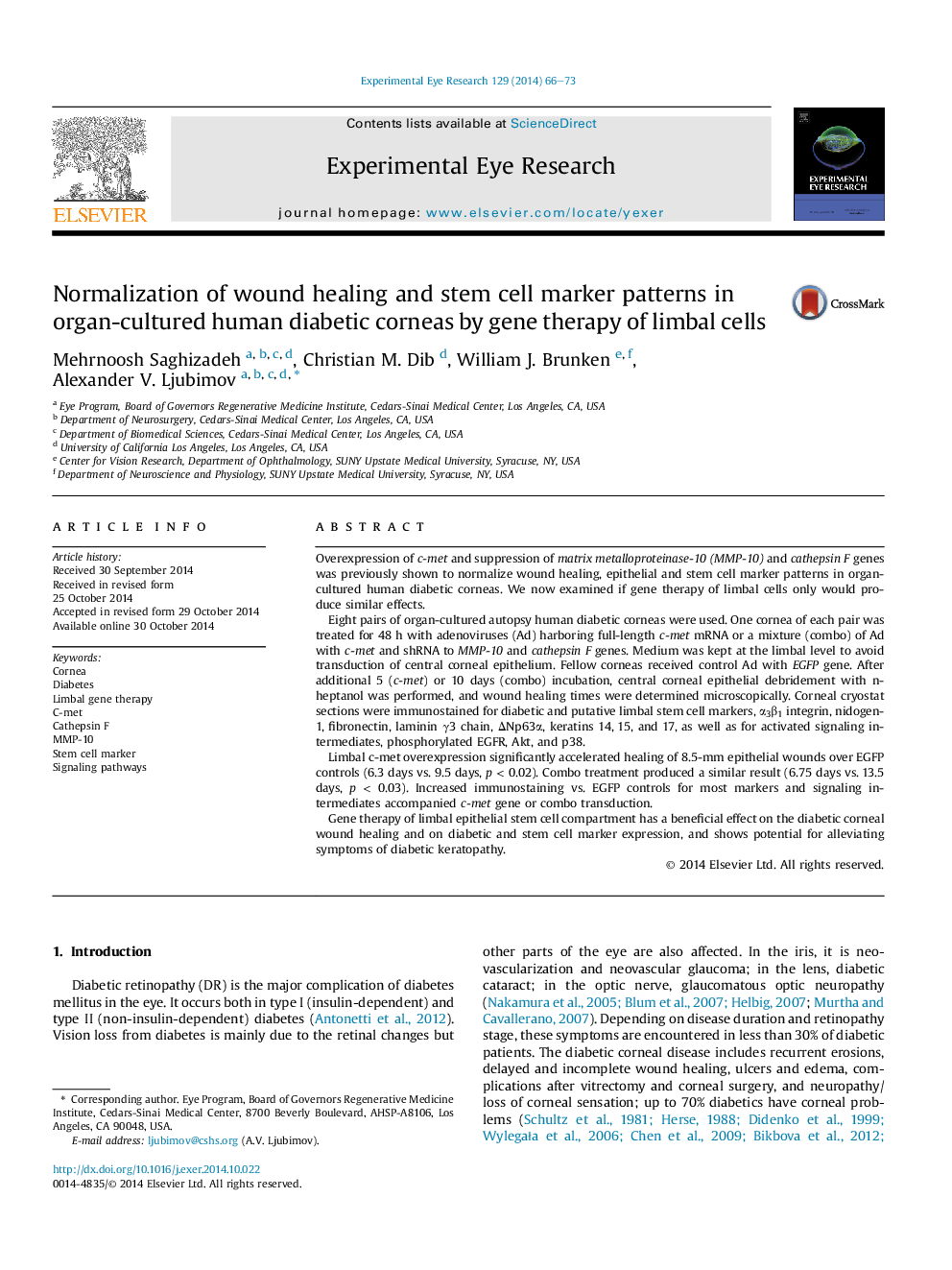| Article ID | Journal | Published Year | Pages | File Type |
|---|---|---|---|---|
| 6196860 | Experimental Eye Research | 2014 | 8 Pages |
â¢Adenoviral gene therapy of limbal cells in organ-cultured diabetic corneas restores normal epithelial wound healing.â¢c-Met overexpression and silencing of MMP-10 and cathepsin F normalizes patterns of corneal diabetic and stem cell markers.â¢Gene therapy effects may be mediated by wound healing-related signaling through EGFR-Akt and p38 axes.
Overexpression of c-met and suppression of matrix metalloproteinase-10 (MMP-10) and cathepsin F genes was previously shown to normalize wound healing, epithelial and stem cell marker patterns in organ-cultured human diabetic corneas. We now examined if gene therapy of limbal cells only would produce similar effects.Eight pairs of organ-cultured autopsy human diabetic corneas were used. One cornea of each pair was treated for 48 h with adenoviruses (Ad) harboring full-length c-met mRNA or a mixture (combo) of Ad with c-met and shRNA to MMP-10 and cathepsin F genes. Medium was kept at the limbal level to avoid transduction of central corneal epithelium. Fellow corneas received control Ad with EGFP gene. After additional 5 (c-met) or 10 days (combo) incubation, central corneal epithelial debridement with n-heptanol was performed, and wound healing times were determined microscopically. Corneal cryostat sections were immunostained for diabetic and putative limbal stem cell markers, α3β1 integrin, nidogen-1, fibronectin, laminin γ3 chain, ÎNp63α, keratins 14, 15, and 17, as well as for activated signaling intermediates, phosphorylated EGFR, Akt, and p38.Limbal c-met overexpression significantly accelerated healing of 8.5-mm epithelial wounds over EGFP controls (6.3 days vs. 9.5 days, p < 0.02). Combo treatment produced a similar result (6.75 days vs. 13.5 days, p < 0.03). Increased immunostaining vs. EGFP controls for most markers and signaling intermediates accompanied c-met gene or combo transduction.Gene therapy of limbal epithelial stem cell compartment has a beneficial effect on the diabetic corneal wound healing and on diabetic and stem cell marker expression, and shows potential for alleviating symptoms of diabetic keratopathy.
